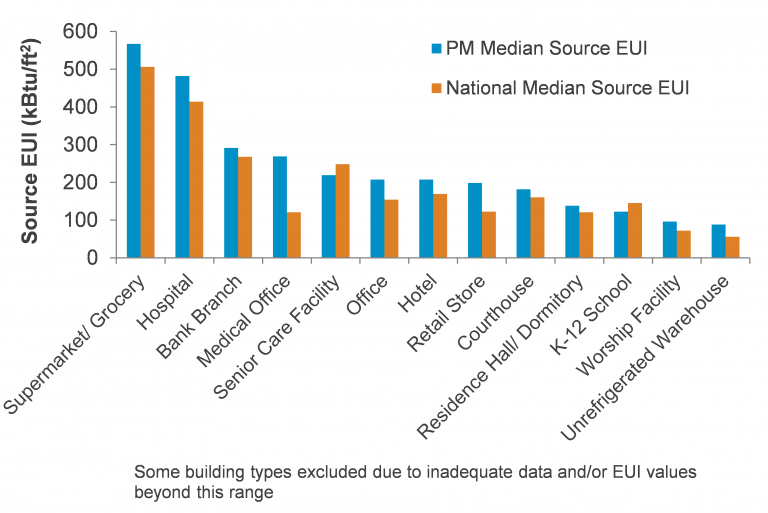
There is consensus among leading industry bodies that an assessment of materiality in the context of financial information, involves a qualitative assessment that takes into account context and surrounding circumstances. In the case of non-financial data, as well as defining the scope of what is material, the challenges in collecting robust and rigorous ESG data means that context and surrounding circumstances are also crucial to understanding a lot of the information that is collected. For example, an environment in which energy prices are rising and resources are becoming scarcer is relevant context for assessing the materiality of energy consumption data as a material ESG issue. The ability for a building owner to collect energy consumption data for a building depends on who occupies the building, the legal and business relationship with that occupier and on regulatory requirements that may require specific action by owner or occupier or grant specific powers to them.
If context and surrounding circumstances are so crucial to understanding the data, doesn’t that undermine its robustness and return us to the point where it cannot be material because it cannot tell us anything concrete without supporting qualitative analysis? There are people that consider that however you might define materiality of financial data, the discussion stops there – any non-financial data (a term which, for these purposes I use synonymously with ESG and sustainability data) cannot be relied on and/or is irrelevant. However, this view is quickly starting to look old fashioned.
PwC UK’s corporate sustainability strategy seeks to address total impact, incorporating measurement but also a holistic approach to measuring performance that goes beyond simple financial metrics and which considers outcomes and impacts from business activities. PwC talks to its stakeholders including clients, staff and recruits and maps its impact and areas of focus based on their feedback. The broader reporting frameworks promoted by the Global Reporting Initiative (GRI) and the International Integrated Reporting Council (IIRC) take into account not only financial but also manufactured, intellectual, human, social and relationship and natural capital. The IIRC’s draft framework has some high profile advocates that are starting to implement the framework in their annual reporting cycles.
That said, a tension exists between this pragmatic approach and the long-term view. International environmental law and policy experts debate the extent of our legal obligations to future generations. Local and national governments wrestle with long-term environmental risks that need to be addressed now. An example is the Thames Barrier, London’s protection against tidal surges from the sea. In the 1980s there were four closures of the barrier, in the 1990s 35 and, so far in the 2010s, there have been 65 closures. The UK government has a Thames Estuary 2100 plan in place to prepare for changes in flood risk levels over the next 70 years. The Environment Agency, the body responsible for implementing the plan, estimates that while in the short term the Thames Barrier does not need to be replaced, London’s current defence system will need to be upgraded from around 2035.
Local and national governments and the NGO community are ideally placed to take a longer-term view The World Economic Forum’s annual Risk Report adopts a 10-year horizon for measuring long-term, systemic risk. The IIRC’s draft reporting framework recommends disclosure of information that “substantively affects the organization’s ability to create value over the short, medium and long term.” The European Commission has set energy reduction targets far into the future.
Is the commercial real estate sector so busy thinking about targets for the coming twelve months that it completely ignores crucial but impossible to quantify, longer-term information? Possibly in some cases that is true. I was in a meeting recently where I was informed that flood risk assessment in London was pointless because of the existence of the Thames Barrier. The speaker did not know much more about the Barrier other than that it crossed the Thames and protected the Thames from flooding. He made no mention of groundwater flooding and, if you are going to rely on the Thames Barrier to explain why you are not concerned about flooding, it makes sense to at least know some basic facts about what the Barrier does and its projected life time.
However, the increase in uptake in ESG reporting frameworks and benchmarking schemes (including GRESB) suggests that investors and managers are aware of the longer-term horizon. In the real estate sector, investors and their managers must integrate their sustainability performance assessment into an annual cycle. Clearly, for the year-on-year operation of the asset, its energy performance and its ability to comply with existing environmental regulations (for example the obligations in the re-cast European Commission Energy Performance of Buildings Directive) is key. So, what are context and surrounding circumstances in the context of sustainability information?
The horizons in the real estate investment community are not narrow. However, companies, investment managers and capital providers are all under significant obligations to report at a minimum annually, on a wide variety of metrics both financial and non-financial. For example, a UK-based REIT GRESB participant is subject to multiple mandatory and voluntary reporting obligations including the Carbon Reduction Commitment (CRC), Carbon Disclosure Project (CDP), and the Principles for Responsible Investment and GRESB. Realistically, you are going to struggle to convince these groups of the materiality of topics that do not impact on these cyclical reporting obligations. However, depending on their investment strategy, owners may hold properties for only a few months. Certainly, the lifetime of the investment will often be far shorter than the lifetime of the asset.
Norges Bank Investment Management (NBIM), in charge of the USD 900 billion Norwegian global government pension fund, has recently called for more rationality in the sustainable investment debate. Speaking at the Geneva Summit on Sustainable Finance, NBIM’s Chief Executive called for rationality around the responsible investment and sustainable finance discussion and said that it was for politicians to address questions of ethics. In other words, focus on information and activities that improve the rigor of the information that you are collecting.
Evidence from the GRESB benchmark indicates that this is the real estate market’s approach. Initially participants’ focus is on collecting data on the performance of real estate assets and qualitative information that supports the interpretation of the data. In 2014, 310 participants included sustainability disclosures in their Annual Report, 321 prepared standalone sustainability reports. In both cases, about half do some kind of third-party check on the data in their reports, in some cases using recognized reporting, verification and assurance standards. In 2014, a participant Survey participant explained to me that efforts are first concentrated on getting hold of data and then on checking it. The approach is realistic and pragmatic.
In a commercial environment, time is best spent, showing investors and their managers the links between what they do now to measure their sustainability performance and the longer-term risk and opportunity horizon. Realistically, responsibility to future generations is not likely to top the materiality priority list for most investors and managers. However, real estate is that most tangible of assets, a piece of land. You can see it, inspect it and observe its operation over time. Not to do so, is to ignore the context and the surrounding circumstances that make an assessment of materiality possible.






